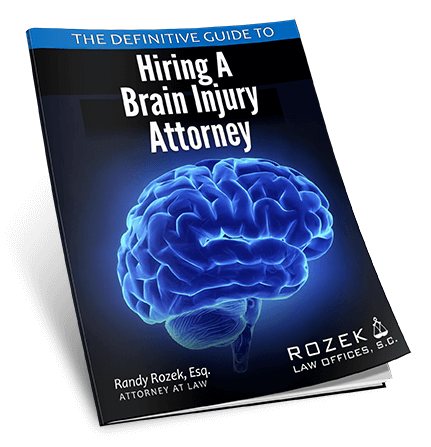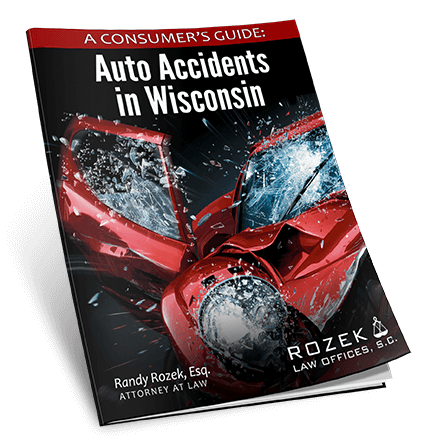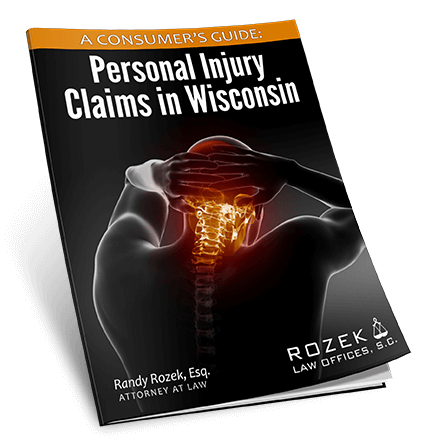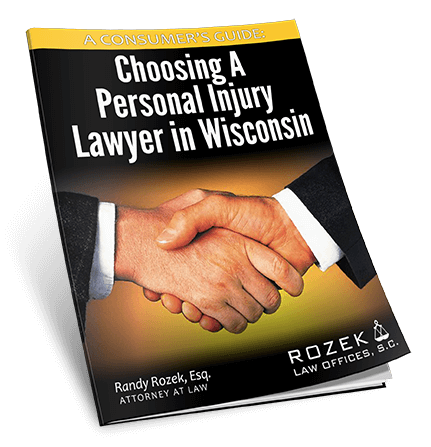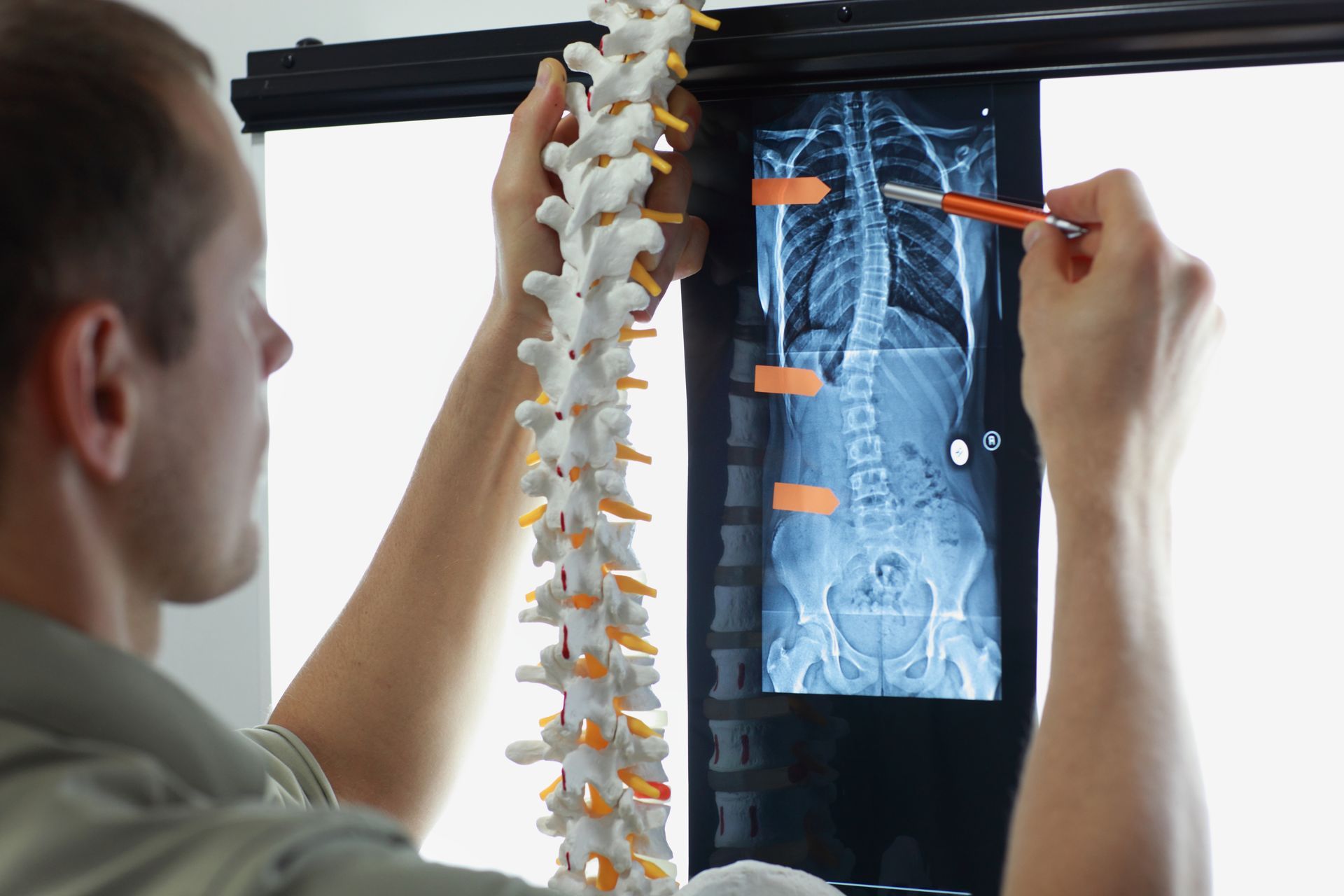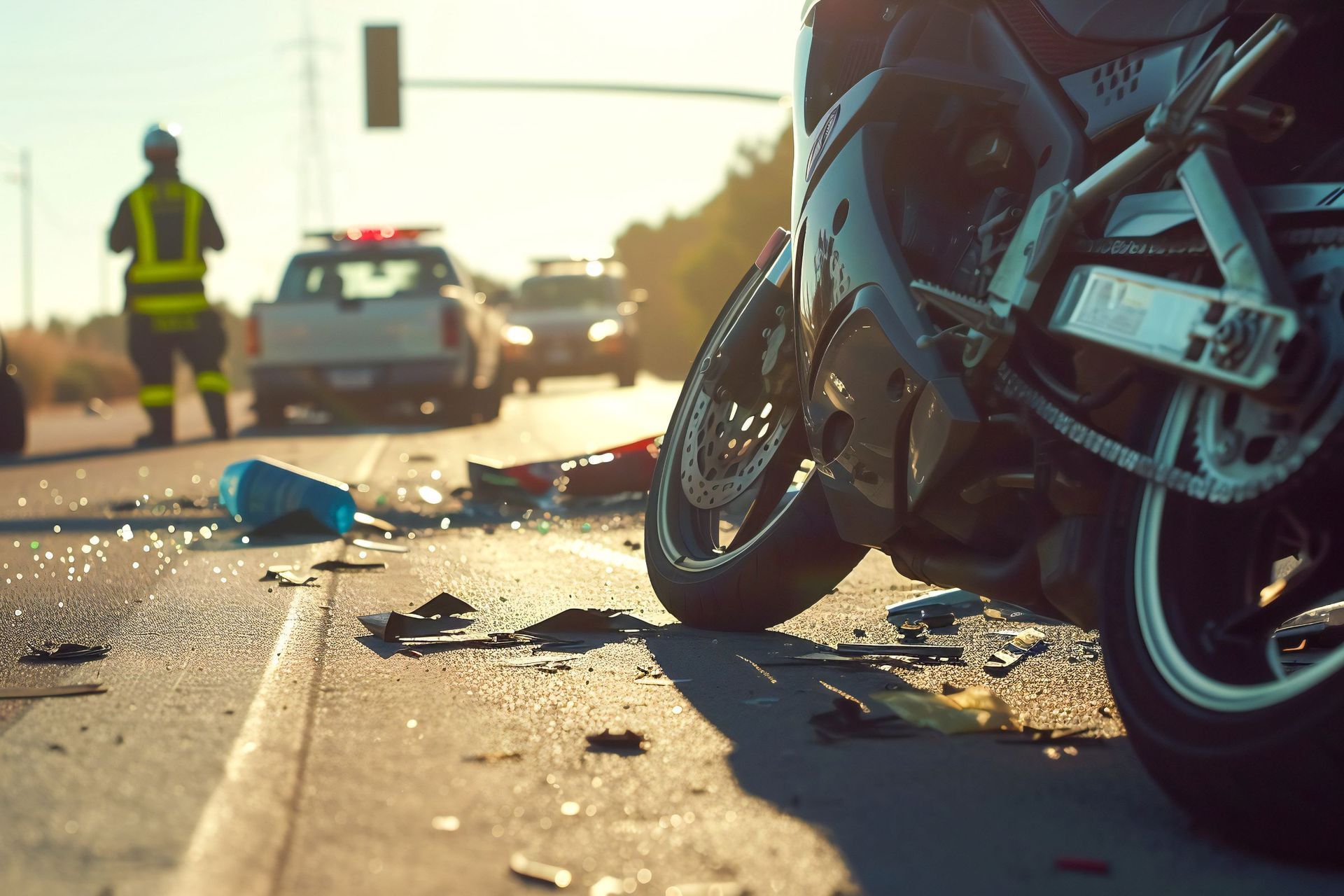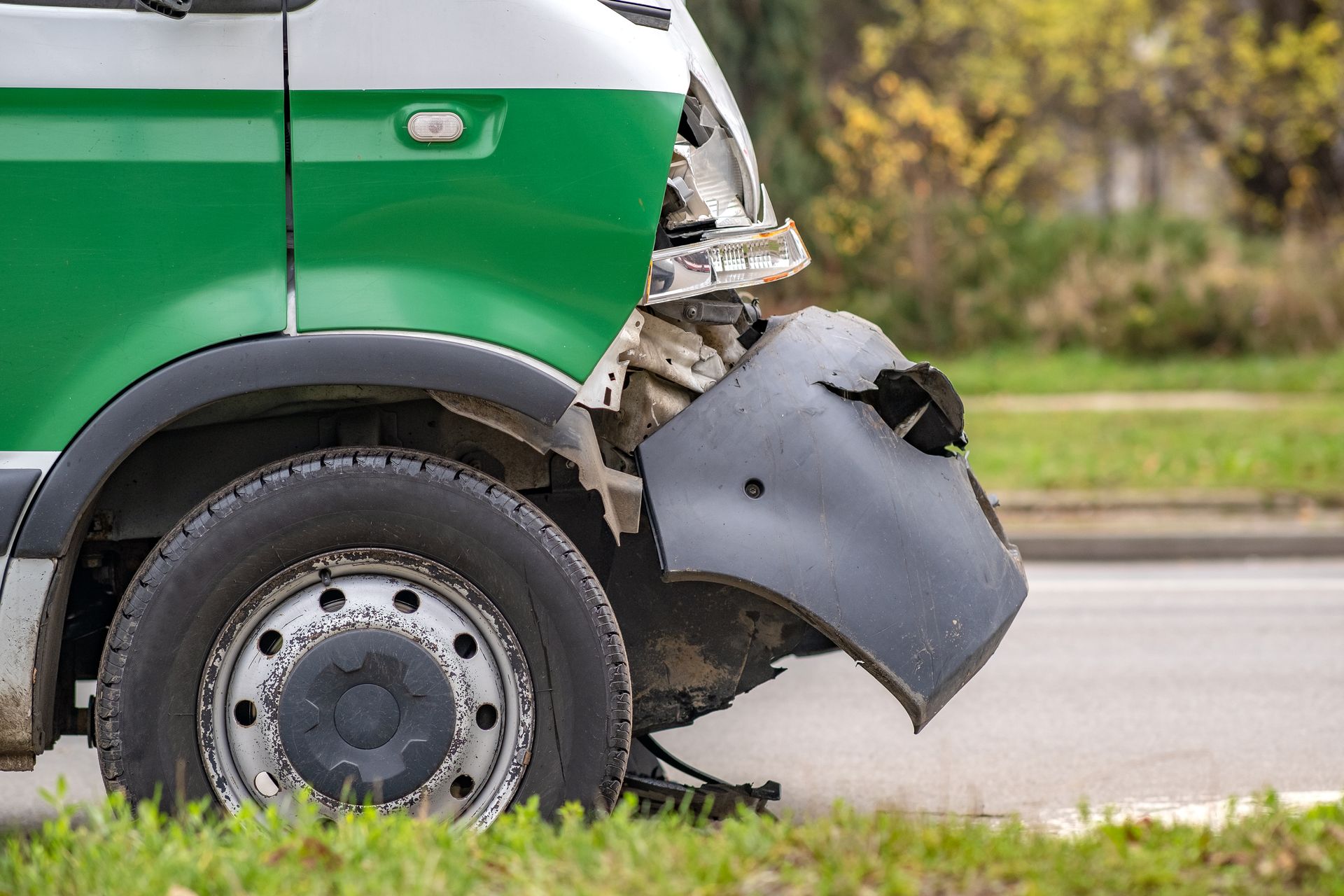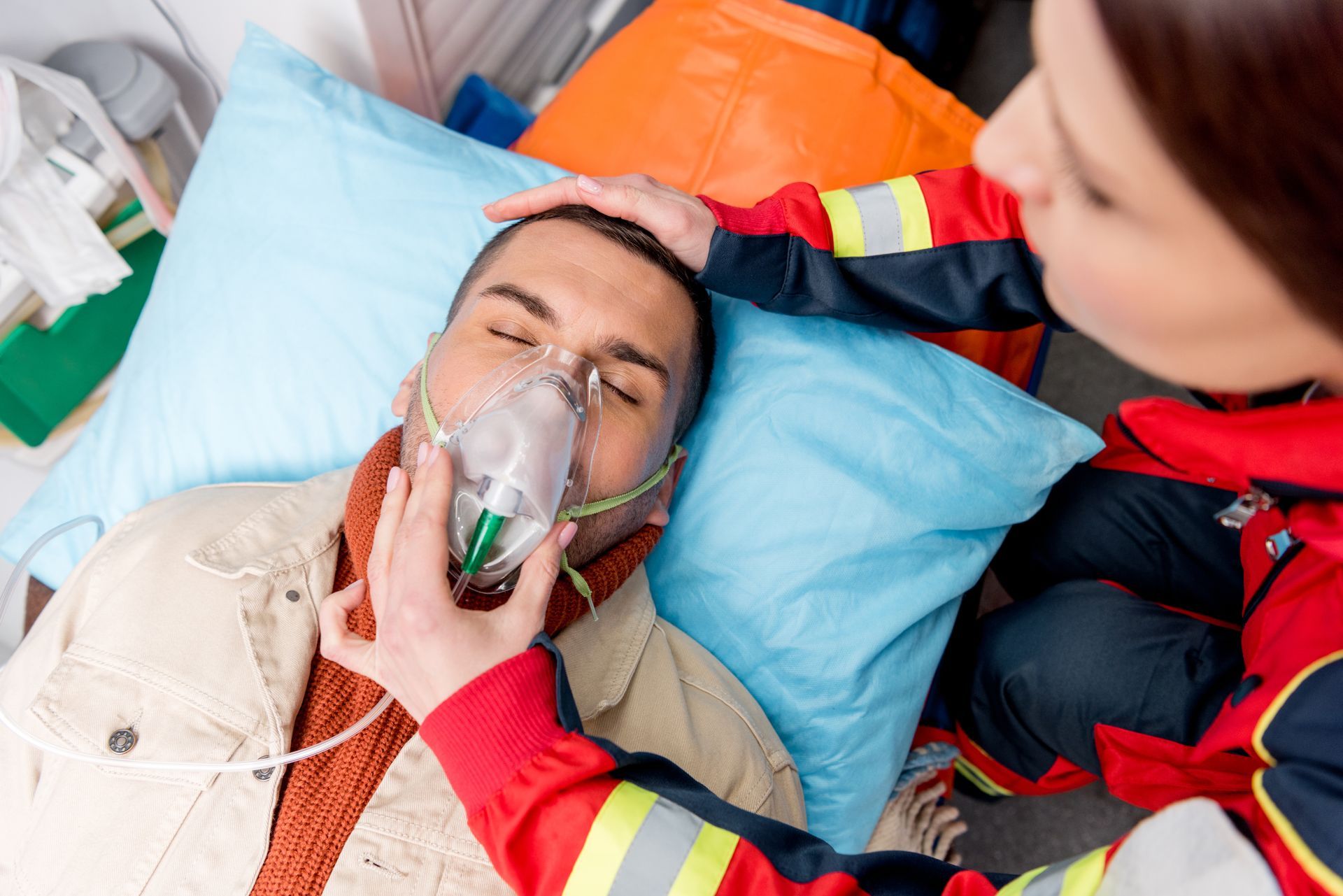Car Accident Lawyer in Wisconsin

Wisconsin Car Accident Attorney
While we have offices in Milwaukee and Madison, we handle car accident cases that happen throughout Wisconsin.
The Wisconsin Department of Transportation
states the following:
“Crashes, Not Accidents:
Traffic crashes are not accidents, but are avoidable events caused by a single variable or chain of variables.”
If you have been involved in an automobile crash, you can assume that someone was at fault for causing the crash. The key to establishing who is at fault in causing a crash is dependent upon the gathering of crucial information at the scene of the crash. This evidence can be in the form of witness observations and statements, in the form of physical evidence such as the damage to vehicles or skid marks left at the scene, or the evidence may be in other forms. The individuals involved in the crash are usually at the peril of the investigating police officer that first responds to the crash to gather this critical evidence. Many times the investigating officers do wonderful jobs. However, no one is perfect and oftentimes witnesses are not properly identified and critical evidence is overlooked. An experienced Wisconsin personal injury attorney may be able to overcome a poor investigation by the officer on the scene.
At Rozek Law Offices in Milwaukee, Wisconsin, we understand the impact being involved in a serious car accident can have on you and your loved ones. It is because we have handled thousands of car accident personal injury cases that we are sympathetic to the struggles victims face in trying to recover compensation for their losses while going through physical rehabilitation from injuries they may have suffered.
We are aware of the regulations and opposition that are common with insurance claims and the recovery of additional damages, such as for pain and suffering and cases of severe injury or death. That is why it’s of utmost importance that you contact experienced personal injury attorneys like ourselves so you may have a better chance of receiving what you rightfully deserve.
Our car accident attorney Randy Rozek, is an experienced professionals who has handled all kinds of personal injury cases. If you’ve been in a car crash and don’t know what your next step is, our firm will schedule a free consultation with you to review your claim and determine how our personal injury lawyers may be able to help. An attorney can help ensure you receive full benefits from the insurance company and determine whether you can file a claim for additional damages against the party at fault for the crash. If you have suffered a serious injury, we can help you file a lawsuit to claim compensation beyond that which is provided through insurance claims.
Rules of the Road
Once the facts of the collision are obtained, lawyers look to the Rules of the Road to determine who is at fault in causing the crash. These Rules of the Road are detailed in Chapter 346 of the Wisconsin Statutes. The Wisconsin Department of Transportation also publishes a Wisconsin Motorist’s Handbook, which explains the Rules of the Road in consumer-friendly manner. Wisconsin lawyers may look to these two sources in determining fault, however, they also have another source available to them and that is the form Wisconsin Civil Jury Instructions. These are the instructions that will eventually be read to the jury at the close of Wisconsin car accident personal injury trial.
If you have been involved in a Wisconsin Automobile Accident, please feel free to download and complete our Wisconsin Car Accident Information Form.
If you have a copy of your Wisconsin Motor Vehicle Accident Report, you can download the Law Enforcement Officer’s Instruction Manual for Completing Wisconsin Motor Vehicle Accident Report Form (MV4000) here, or simply contact our office and we will assist you in understanding the Wisconsin Accident Report Form.
Legal Note Regarding the Use of a Seat Belt in Wisconsin: Insurance adjusters often try to blame the injured party for not wearing a seatbelt. However, Wisconsin law is clear that the maximum reduction that can be taken from an injured person’s damages is 15%. This 15% can only be taken from the injured person’s recovery for damages that were caused by not wearing the seatbelt. The at-fault driver has the burden of proof to show which injuries, if any, were due to the lack of use of a seatbelt. If the defense meets their burden of proof, then and only then, can 15% be reduced from the injured person’s damages.
If you or a family member have been injured as a result of a car accident in Wisconsin, be sure to contact an experienced Wisconsin car accident lawyer for you or your family member’s case.
Milwaukee, Wisconsin Car Accident Checklist
If you have been involved in a Wisconsin car accident, we recommend you do the following:
- Stop. Wisconsin law requires that the driver of an automobile involved in a collision to stop at the scene of any collision that has resulted in personal injury, death, or property damage. Failing to remain at the scene of the accident could lead to a traffic citation, or even criminal charges.
- Assist the Injured.
Do your best to provide comfort and assistance to anyone that has been injured in the collision. Do not move anyone unless absolutely necessary for their immediate safety. You could easily cause more injury to someone simply by moving them.
- IF YOU ARE THE ONE INJURED, THEN OBTAIN MEDICAL TREATMENT AS SOON AS POSSIBLE.
If you are at the scene, request an ambulance. If it is too late, go to the nearest emergency room. If you are in pain the next day, go to your primary care physician. One of the biggest mistakes following an accident is failing to see a doctor immediately afterwards. Many people think that their pain will go away on its own, but months later, they still have the pain. Without medical treatment, there is no way to prove the injury is related to the automobile accident.
- Call 911. As soon as possible, call 911 if anyone has complaints of pain or seems to be dazed or disoriented. Explain your situation and provide them with the exact location of the accident. Inform the 911 operator as to whether an ambulance or a fire engine is necessary. It is always better to err on the side of caution when deciding whether an ambulance is necessary. Remain on the telephone until the 911 operator tells you it is okay to hang up.
- Move All Vehicles to Safety.
Assess the scene of the accident to determine whether oncoming vehicles will see and be able to avoid the accident. You could be liable for damages to approaching vehicles unless they are properly warned. Make sure to turn on your hazard lights. If your car can’t be driven, have the emergency responders obtain a tow truck on your behalf.
- Assist the Authorities.
Unless you have been injured, remain at the scene of the collision until the police have arrived and authorized you to leave. Further assist the police by explaining exactly what you witnessed. Do not guess or speculate when asked about speeds or distances. When estimating speed or distance it is always best to provide a range for which you are comfortable. Avoid making conclusory statements, such as, “He was at fault.” The role of the police officer is to determine fault after gathering all facts and evidence. Ask the officer for his or her information and how you may obtain a copy of the completed motor vehicle accident report.
- Identify Everyone at the Scene.
It is absolutely critical that you attempt to obtain as much information possible about all of the people at the scene of the collision. This includes the drivers, passengers and witnesses. This is perhaps the most common mistake made by accident victims as well as police officers. Name, address, phone number, license plate number, make/model of vehicle, date of birth, etc. All of this information could help track down witnesses if it later becomes necessary.
- Do Not Admit Fault.
Do not volunteer any information about who may have been at fault in causing the collision. You may think you were at fault, but later learn that the other driver is as much or more to blame than you are. Anything you say at the scene can later be used against you.
- Do Not Agree to Pay for Any Damages at the Scene and Do Not Accept Payment for Your Damages at the Scene.
Your offer to pay someone for their damages is an implied admission of fault. Furthermore, any acceptance of payment on your part could be considered a full and final settlement and preclude you from recovering additional money in the future.
- Document the Accident.
Even if the police complete a report, you should create your own documentation of the collision. The essential information will be the date, time, location, and a diagram of the accident scene showing the position and direction of the vehicles just prior to and immediately following the collision.
- Take photographs.
If you have a camera or camera-phone, by all means use it. You should take your own photographs even if the police are taking photographs. You should attempt to photograph the following: the scene; the property damage; inside and out of the vehicles; license plates; skid marks; and, perhaps most importantly, visible injuries to persons involved in the accident.
- Report the Accident to Your Insurance Company.
Call your automobile liability insurance company and provide them with the details of the collision. Any delay in reporting the accident could result in a denial of your insurance coverage. Depending on your coverage and the coverage of the other driver, you may be entitled to medical payment coverage, uninsured motorist coverage and/or underinsured motorist coverage. DO NOT PROVIDE THEM WITH A RECORDED STATEMENT PRIOR TO SPEAKING WITH A LAWYER.
- Call an Injury Lawyer. Most personal injury lawyers offer free telephone consultations. Many lawyers also offer free written materials that can assist you in deciding how to proceed with your case.
In order for us to better serve you, it’s important for you to understand what is expected of you and the process after the accident.
Commercial Airplane Crashes in Wisconsin involve all airplane crashes conducted by an airline for profit. Commercial airplanes are highly regulated by the federal government. It is common for a detailed investigation of a Commercial Airplane Crash to show that the carrier violated federal safety regulations.
Frequently Asked Questions by Car Accident Victims:
What should we do after being involved in a car accident?
- Take photographs.
If you have a camera or camera-phone, use it. You should take your own photographs even if the police are taking photographs. You should attempt to photograph the scene; the property damage; inside and out of the vehicles; license plates; skid marks; and, perhaps most importantly, visible injuries to persons involved in the accident.
- Report the Accident to Your Insurance Company. Call your automobile liability insurance company and provide them with the details of the collision. Any delay in reporting the accident could result in a denial of your insurance coverage. Depending on your coverage and the coverage of the other driver, you may be entitled to medical payment coverage, uninsured motorist coverage and/or underinsured motorist coverage. DO NOT PROVIDE THEM WITH A RECORDED STATEMENT PRIOR TO SPEAKING WITH A LAWYER.
Call a Wisconsin Auto Accident Lawyer:
We offer free telephone consultations to assist you in deciding how to proceed with your case.
- Milwaukee, Wisconsin location: 414-347-4444
- Madison, Wisconsin location: 608-208-1147
If you or the other driver have been injured, the Wisconsin Department of Transportation recommends that you follow the steps described below:
- Stop.
Wisconsin law requires the driver of an automobile involved in a collision to stop at the scene of any collision that has resulted in personal injury, death, or property damage. Failing to do so could lead to a traffic citation or criminal charges.
- Assist the Injured.
Do your best to provide comfort and assistance to anyone that has been injured in the collision. Do not move anyone unless it is absolutely necessary for their immediate safety as you could easily cause more injury to someone simply by moving them.
- Obtain medical treatment if you are injured.
Request an ambulance but if it is too late, go to the nearest emergency room. If you are in pain the next day, go to your primary care physician. One of the biggest mistakes people make following an accident is failing to see a doctor immediately afterwards. Many people think that their pain will go away on its own, but months later, they still experience the pain. Without medical treatment, there is no way to prove the injury is related to the automobile accident.
- Call 911.
Immediately call 911 if anyone has complaints of pain or seems to be dazed or disoriented. Explain your situation and provide them with the exact location of the accident. Inform the 911 operator as to whether an ambulance or a fire engine is necessary. Remain on the telephone until the 911 operator tells you it is okay to hang up.
- Move all vehicles to Safety.
Assess the scene of the accident to determine whether oncoming vehicles will see and be able to avoid the accident. You could be liable for damages to approaching vehicles unless they are properly warned. Make sure to turn on your hazard lights. If your car can’t be driven, have the emergency responders obtain a tow truck on your behalf.
- Assist the Authorities.
Unless you have been injured, remain at the scene of the collision until the police have arrived and authorized you to leave. Further assist the police by explaining exactly what you witnessed. When estimating speed or distance it is always best to provide a range for which you are comfortable. Avoid making conclusory statements, such as, “He was at fault.” The role of the police officer is to determine fault after gathering all facts and evidence. Ask the officer for his or her information and how you may obtain a copy of the completed motor vehicle accident report.
- Identify everyone at the scene.
It is critical that you attempt to obtain as much information possible about all of the people at the scene of the collision. This includes the drivers, passengers and witnesses. Jot down their name, address, phone number, license plate number, make/model of vehicle, date of birth, etc. All of this information could help track down witnesses if it later becomes necessary.
- Do not admit fault.
Do not volunteer any information about who may have been at fault in causing the collision. You may think you were at fault, but later learn that the other driver is as much or more to blame than you are. Anything you say at the scene can later be used against you.
- Do not agree to pay for any damages at the scene and do not accept payment for your damages at the scene.
Your offer to pay someone for their damages is an implied admission of fault. Furthermore, any acceptance of payment on your part could be considered a full and final settlement and preclude you from recovering additional money in the future.
- Document the accident. Even if the police complete a report, you should create your own documentation of the collision. The essential information will be the date, time, location, and a diagram of the accident scene showing the position and direction of the vehicles just prior to and immediately following the collision.
What is the first step in a personal injury accident claim?
The first step is the investigation. A thorough investigation of the facts leading to the accident, the accident itself, and prior similar accidents, is critical. Our network of nationally-recognized experts in a variety of different fields sets us apart from other Wisconsin personal injury law firms.
Our investigations lead to the ability to prove negligent conduct in a systematic, undeniable way. Oftentimes, our investigators discover information about an individual or company that can eventually lead to punitive damages against the at-fault individual or company.
Note: Oftentimes, it is critical that investigations be conducted within hours or days of the accident. In some circumstances, crucial evidence may be lost or destroyed without an immediate investigation. Many at-fault companies gain an advantage over injured persons because they immediately investigate accidents that they have caused.
What happens after an investigation has been conducted?
Once we are confident that a thorough investigation has been conducted, our attorneys can begin formulating concepts on how to establish that the at-fault party is liable for the accident. We will also determine interesting ways to illustrate key elements of the investigation for a jury. Juries today must be entertained during trial or they will lose attention. At Rozek Law Offices we use cutting edge technology in all aspects of our clients’ cases. Our effective use of technology in the courtroom has been reflected in the verdicts we have received.
How much is my car accident claim worth in Wisconsin?
The best way to determine how much your claim is worth is to schedule a free consultation with an attorney at our firm. It’s difficult to determine how much your claim is worth without reviewing all elements of the accident. When you meet with a lawyer at our firm, we can give you a much better idea of how much your claim may be worth.
If I’m in an accident in Wisconsin, what am I able to recover damages for?
If you were injured in an accident, you have the potential to recover damages for your medical bills, future medical bills, on-going treatment and rehabilitation, medication and any necessary adaptive equipment, property damage, lost wages, future lost wages, emotional distress, and pain and suffering.
Wisconsin Automobile Laws to Consider
Rules of the Road in Wisconsin
Once the facts of the collision are obtained, we will look to the Rules of the Road to determine who is at fault in causing the crash. These Rules of the Road are detailed in Chapter 346 of the Wisconsin Statutes. The Wisconsin Department of Transportation also publishes a Wisconsin Motorist’s Handbook, which explains the Rules of the Road in a consumer-friendly manner. We may look to these two sources in determining fault, however, we also review the Wisconsin Civil Jury Instructions that will eventually be read to the jury at the close of a car accident personal injury trial.
Wisconsin Statute of Limitations
Although it varies by case, for a typical Wisconsin personal injury accident, the Statute of Limitations is 3 years, meaning an injury victim has 3 years from the date of the accident to settle their claim or file a lawsuit. However, the 3-year limitation can be shortened depending on the circumstances.
Wisconsin personal injury claims against municipal entities requires the injury victim to provide the particular entity with written notice of the injury within 120 days of the event. The injury victim must also present the municipal entity with a detailed notice of the claim prior to the filing of a lawsuit.
Wisconsin Auto Accident Statistics
Each November, the Department of Transportation releases preliminary information on the state’s automobile accidents and fatalities. We are awaiting the statistics for this year but it appears that there were more injuries and fatalities in 2015 than in 2013 and 2014. This was also an increase in alcohol-related injuries and fatalities, which were both higher than the previous four years. According to preliminary results, there were 111,791 total accidents and collisions in 2015. Of those, 82,191 resulted in property damage and 29,036 resulted in injury. There were also 509 total fatalities. These death and injury rates are higher than both 2014, in which there 451 fatalities and 28,801 injuries, and 2013, in which there were 491 fatalities and 28,474 injuries. Overall fatality rate increased by .11 percent from the previous year.
This significant increase in fatalities in 2015 is a rather concerning trend and shows that there is still much progress to be made with safe driving awareness.
The Rozek Law Experience
With nearly 20 years of experience, personal injury attorney Randall Rozek has personally been involved in the successful resolution of hundreds of personal injury cases, whether it be through trial, mediation, arbitration or settlement. This shows how capable he is of obtaining substantial results for his clients. Although Rozek is licensed in Wisconsin, he has handled several cases throughout the country and has successfully represented injury victims from Alaska to Florida. A graduate of the University of Wisconsin Law School, in 2004 he opened his own practice and has since focused on the representation of victims of serious, life-changing injuries.
He currently serves on the Board of the Traumatic Brain Injury Litigation Group of the American Association for Justice and is the editor of the Journal of Traumatic Brain Injury Litigation. He has also been selected to receive the Robert L. Habush Trial Lawyer of the Year Award from the Wisconsin Association for Justice (WAJ). In early December when the award is presented, Rozek will become the youngest recipient of the award in history. In May of 2016, a jury returned a $7.25 million verdict in a difficult bicycle vs. pickup truck collision after only 3 days of trial. The award was based on Rozek’s success at excluding certain damaging evidence and overcoming unfavorable testimony from the defendant, investigating police officer and an independent witness. In his closing, Rozek asked for $5.25 million, but the jury recognized the severity of his client’s injury and instead awarded $7.25 million.
Car Accident Lawyer Randy Rozek
belongs to a number of diverse medical-legal professional associations. The majority of these associations involve the sharing of cutting-edge information among lawyers and physicians throughout the United States. Rozek is also routinely asked to speak to these lawyers and doctors in order to educate them on such issues, particularly in the area of representing victims of Traumatic Brain Injury. The following are just some of the professional advocacy groups to which Attorney Rozek belongs:


